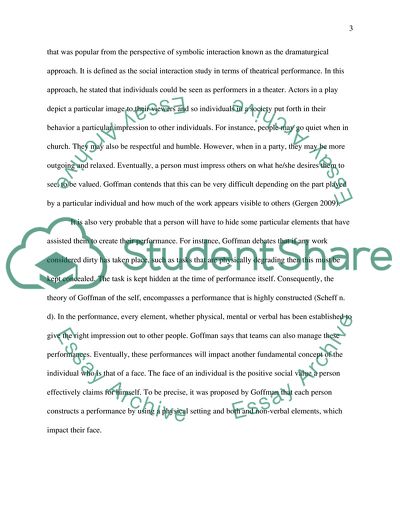Cite this document
(Describing the Theory of Goffman Essay Example | Topics and Well Written Essays - 2000 words, n.d.)
Describing the Theory of Goffman Essay Example | Topics and Well Written Essays - 2000 words. https://studentshare.org/sociology/1864796-describe-the-theory-of-goffman-analyse-the-approach-and-explain-how-the-theory-is-relevant-today-providing-examples-from-contemporary-society
Describing the Theory of Goffman Essay Example | Topics and Well Written Essays - 2000 words. https://studentshare.org/sociology/1864796-describe-the-theory-of-goffman-analyse-the-approach-and-explain-how-the-theory-is-relevant-today-providing-examples-from-contemporary-society
(Describing the Theory of Goffman Essay Example | Topics and Well Written Essays - 2000 Words)
Describing the Theory of Goffman Essay Example | Topics and Well Written Essays - 2000 Words. https://studentshare.org/sociology/1864796-describe-the-theory-of-goffman-analyse-the-approach-and-explain-how-the-theory-is-relevant-today-providing-examples-from-contemporary-society.
Describing the Theory of Goffman Essay Example | Topics and Well Written Essays - 2000 Words. https://studentshare.org/sociology/1864796-describe-the-theory-of-goffman-analyse-the-approach-and-explain-how-the-theory-is-relevant-today-providing-examples-from-contemporary-society.
“Describing the Theory of Goffman Essay Example | Topics and Well Written Essays - 2000 Words”. https://studentshare.org/sociology/1864796-describe-the-theory-of-goffman-analyse-the-approach-and-explain-how-the-theory-is-relevant-today-providing-examples-from-contemporary-society.


